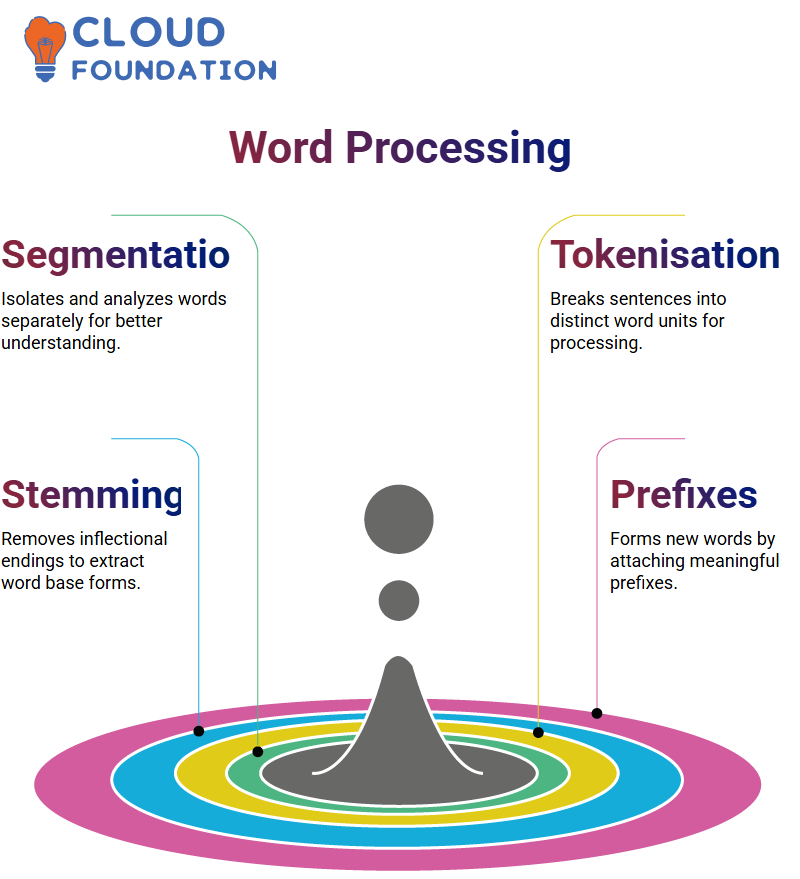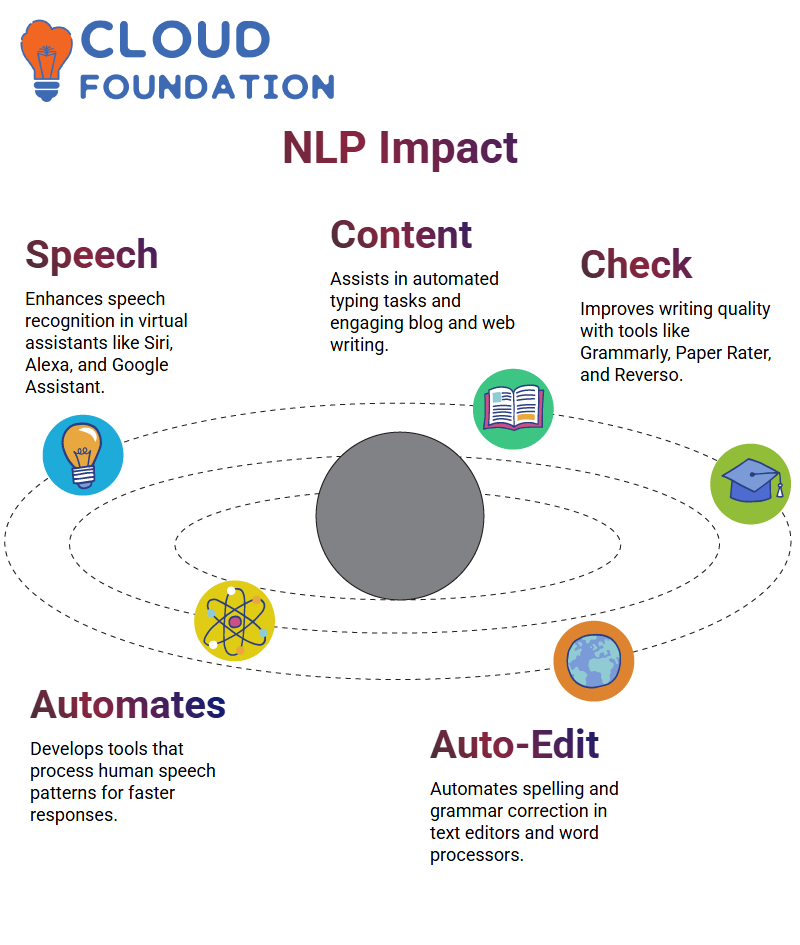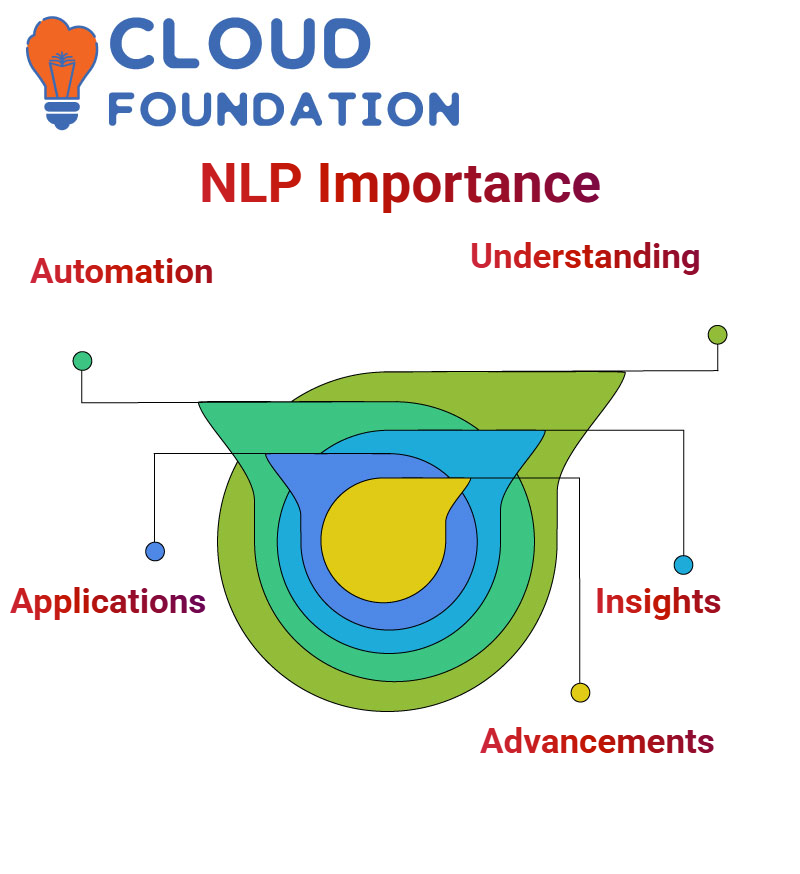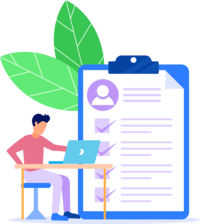What is NLP?
What Is Natural Language Processing (NLP)?
Natural Language Processing, commonly known as NLP, refers to humans’ natural means of communicating, such as speech and text messages.
This form of human speech or writing communication, known as natural language, can be heard daily on television news broadcasts and websites like this.
NLP pipelines are essential in translating text for machines to understand as humans do, covering fundamental processes involved with text passage through NLP.
NLP comes into the picture when machines cannot understand certain languages, like French and Spanish, as these systems only speak binary-coded messages.
NLP (Natural Language Processing) is an invaluable tool that helps individuals communicate more efficiently.
It enables machines to understand and interpret human speech that would otherwise escape computer translation, often in forms computers cannot interpret.
Why NLP (Natural Language Processing)?
Natural Language Processing (NLP) is an area of artificial intelligence concerned with interactions between humans and computers.
NLP (Natural Language Processing) seeks to read, decode, and understand human languages efficiently and effectively, using systems that make sense of text for translation, grammar checking, or topic classification purposes.
Companies increasingly turn to NLP for data insights and to automate repetitive tasks.
Sentiment analysis helps detect negative feelings, such as those found on social media posts or negative comments on articles. Media NLP refers to an accumulation of knowledge.
NLP pipelines are sets of data processes connected in series where each element’s output becomes its input for subsequent components.
Why Are Segmentation and Tokenisation Vital in NLP?
Segmentation involves breaking up text into even segments for tokenisation purposes.
These segments are further divided into tokens, with word stems identified for each token and root words recognised using lemmatisation to help establish which part of speech a word belongs to.
This process includes recognising which part of speech each word belongs to—verbs, nouns, and pronouns, for instance.
Sequence segmentation is another technique that divides text into easily identifiable information units that can be deciphered.

Subdividing an HTML file into its constituent sentences allows us to efficiently process it while keeping its essence and vital information intact.
Step two of this pipeline process is tokenisation, or breaking apart sentences into their constituent words for better comprehension of meaning and intent of sentences.
When complete, this step will result in computer-friendly files.
Tokenisation is another critical element in segmentation. This practice divides sentences into component words to ensure better comprehension of textual materials.
Sentence Segmentation and Word Analysis in NLP
Sentence segmentation involves isolating each constituent word within a sentence, storing them separately, and deciphering their relevance by analysing every word separately.
This process prevents information from being lost due to computer illiteracy in understanding a sentence’s syntactic and semantic aspects.

Tokenisation separates each word within it into five tokens, which can then be treated as separate entities.
Stemming is another crucial component of sentence segmentation. It forms word stems (known as base forms of words) by eliminating inflectional endings.
Word stems can be produced from new word forms by attaching prefixes. Inflexion St recognises individual word stems by stripping away unnecessary components – for instance, in “s-ed.”
Example sentence. Word stems can be obtained by stripping away all suffixes, such as in s ed, and then renaming the phrase to obtain Jump’s basic stem word.
Understanding Lemmatisation and Its Role in NLP
Lemmatisation refers to a process whereby computer algorithms remove any prefixes attached to individual words in a sentence so that it can more readily understand their meaning.
Lemmatisation ensures no information is lost due to computers’ lack of understanding of the syntactic and semantic aspects of sentences.
It refers to finding each word’s root form (lemma), which represents its most fundamental form (root word).
Like stemming, which involves extracting word endings to reveal their base form, root stemming provides words not usually found in dictionaries. Yet, their base forms still represent the core meaning of these concepts.
Lemmatisation uses a knowledge base (KB), including a Binomial Algorithm, to establish the base form of each word.
Each component in a pipeline is known as a part, while part-of-speech tagging involves changing sentences into various formats, such as lists of words or tuples.
In this instance, a tag forms part of a list or tuple of words.
It specifies whether there is any form of speech tag within each individual word in that list or tuple and indicates whether that particular word can be classified as a noun, an adjective, a verb, or another type.
Part-of-speech tagging is an integral component, since one word may take on different roles across sentences.
Lemmatisation involves breaking sentences down into individual elements, such as lists or phrases, before extracting their verb components for analysis.
This process helps understand the meaning of any sentence and extract relationships among words.
A Knowledge Graph is also essential, as one word can have multiple parts of speech depending on which sentence it’s being considered in.
The Role of NLP in Chatbots and Online Communication
Natural language processing (NLP) has numerous applications; one step in particular being classifying speech parts that appear within unstructured texts.
Part-of-speech tagging helps identify individual words and determine their respective components, while extracting main entities helps sort and detect important information within texts.
NLP can help organize large data sets and unstructured information efficiently and accurately, such as persons, quantities, locations, organisations and monetary values.
NLP applications range from chatbots and online chat services to CH conversations.
Chatbots offer solutions by performing natural language tasks such as generation and conversation in plain English, providing direct contact and helping solve everyday issues.

NLP can be seen being applied in real-world scenarios through chatbots. These bots utilize natural language processing technology to solve problems while performing natural language tasks.
Chatbots may converse in plain English while maintaining direct human agent contact.
Companies often turn to chatbots or websites like WhatsApp chat for ease of communication between bots and humans.
Users can then interact directly with one another, making processes faster and simpler overall.
One key use for NLP is chatbots, which can assist users by performing natural language tasks and conversing in plain English with real-life people.
Impact of NLP on Speech, Text Editing, and Machine Learning
Natural Language Processing has many applications beyond speech recognition, such as machine learning, autocorrect and auto-correct.
Speech recognition is perhaps best known from NLP, which has been put to work via virtual assistants like Google Assistant, Siri, and Alexa.
These machines understand and translate human language, making it simple to comprehend requests and respond efficiently.
Autocorrect, also called text replacement, is an automated feature available across various applications, such as word processors and text editors, that helps eliminate grammar-based spelling errors or replace missing letters automatically.

NLP serves as a computer spell check, correcting spelling or grammar mistakes in text. Language check software like Grammarly, Paper Rater, and Reverso can also check the uniqueness of articles written for publication.
NLP further enhances article engagement by recognising and correcting spelling and grammar issues as text is written.
Language check software such as Grammarly, Paper Rater and Reverso can even check an article’s uniqueness.
Automation technology has been used to develop automated tools capable of comprehending human speech patterns and responding more easily and quickly to requests; it is also used to improve the quality of articles.
NLP can also be utilised to automate typing tasks and develop engaging web and blog content for websites and blogs, making NLP an indispensable asset across industries.
From speech recognition to machine learning and beyond – its application continues to shape humanity!
By applying natural language processing (NLP) to numerous applications, such as machine learning, we can further our knowledge of human speech while improving the quality of life for everyone involved.
Understanding NLP and Its Role in Document Processing
Machine learning and analytics have become key elements in many fields, from customer behaviour and habits analysis to data mining, medical imaging analysis, and more.
Data exchange between various parties is vital to gaining insight into human and customer behaviours and habits.
Data analysts and machine learning specialists use it to train machines to mimic human language behaviour, saving millions on workforce costs while saving precious time for human speech production.
NLP technology is widely employed, as daily users depend on it for seemingly mundane and inconsequential tasks such as spelling words correctly or checking whether an article or thesis will violate copyright agreements.
However, there can be instances where users need help spelling a particular word correctly or would like assurance they won’t get caught for copyright violations.
Plagiarism checkers can detect such instances and help match work correctly. At the same time, for an algorithm to comprehend a document or article correctly, it must first process it to be easily understandable, almost like giving birth!
To make an algorithm understand an article correctly, it needs to make its understanding easy for the machine to digest, just like giving birth!
Users new to reading must break their document into individual sentences to begin learning to do it for the first time.
They can do this by segmenting articles using punctuation marks like full stops and commas that an algorithm will recognise as punctuation marks for its understanding.
It emphasises the need for someone to always be available so users can access sufficient information to make sound decisions.
How NLP Turns Text into Meaningful Data?
Natural Language Processing (NLP) involves understanding input presented as text or speech formats by machines that analyse various linguistic features of such input.
NLG (Natural Language Generation) refers to turning raw data into understandable language that humans can easily comprehend, producing natural-sounding phrases from raw input data.
Students implementing NLP concepts will require packages like NLTK (Natural Language Toolkit) and Spacy for implementation purposes.

Tokenisation is the initial stage in natural language processing (NLP). Tokenisation involves breaking text up into individual units with an associated value; word tokenisation functions provide this service by breaking an entire string into tokens based on each word and exclamation mark as separate tokens.
These tokens can then be utilised in processes like parsing and text mining.
With the NLTK package, entire strings are split into individual tokens, which are then frequency tested using the NLTK probability package frequency testing to establish their frequency distributions.
Frequency tests are created by iterating through all tokens and adding up each count where one appears, before using the Frisch function to calculate the frequency distribution for all tokens encountered.
Conclusion
Natural Language Processing (NLP) is an indispensable branch of artificial intelligence integral to building trust between humans and machines.
From basic tasks such as tokenisation and sentence segmentation to more sophisticated processes like lemmatisation, part-of-speech tagging and sentiment analysis, NLP helps convert human language into formats machines can understand.
These processes are key in helping machines understand textual and spoken languages and form the backbone for numerous real-world applications, such as chatbots, virtual assistants, grammar checkers, and speech recognition systems.
NLP can have an immense effect across various industries—from customer service and content production to healthcare and finance—by automating tasks, increasing efficiency, and enriching user experiences.

Tools like NLTK and Scikit-learn allow data scientists and developers to build intelligent systems capable of analysing language patterns, detecting emotions, categorizing topics and simulating human-like interactions.
NLP-driven insights gleaned from unstructured data assist businesses with making more informed decisions and understanding customer sentiment more comprehensively.
Accuracy and capability are constantly expanding with the increased utilisation of machine learning models such as logistic regression, naive Bayes, and support vector classifiers in NLP systems.
As our daily text and voice data production grows exponentially, so does the need for advanced NLP solutions.
NLP empowers machines to better understand, generate, and interact with natural language. It represents an enormous leap forward for human-computer interactions and provides the foundation for future advancements in artificial intelligence.

Sai Susmitha
Author



